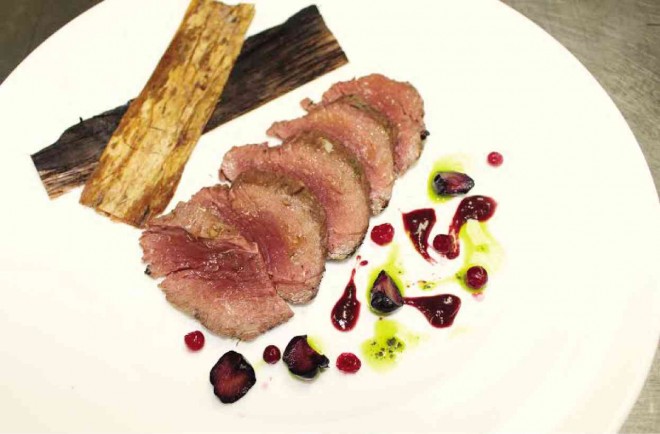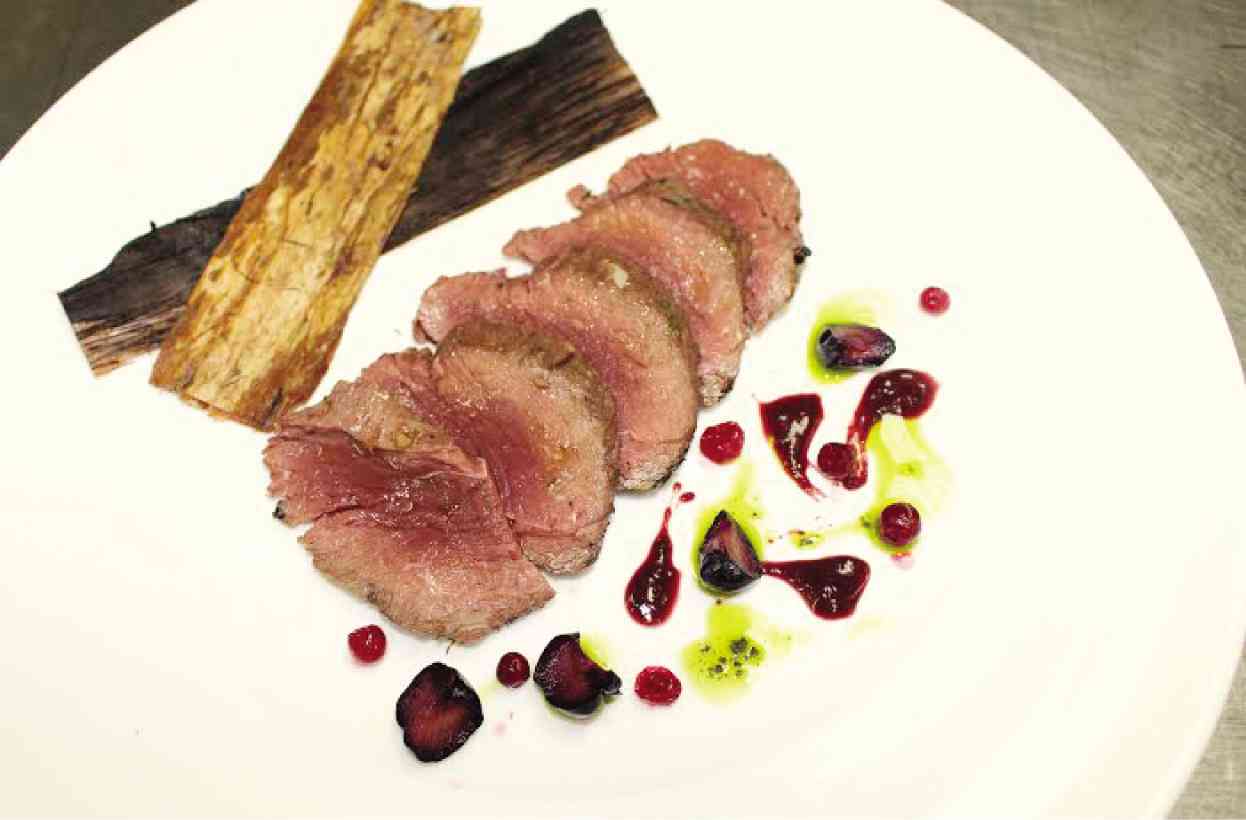
Many people are curious about Australian cuisine, which is noted for its diversity and unique ingredients. That’s why I rushed to Diamond Hotel upon learning that Australian chef Steve Shrimski was holding a food festival. I had to taste and see what he was cooking.
Shrimski and his Filipino wife, Eya Rapes, have been married for 20 years. They first met in Vietnam where they were assigned for the opening of an international hotel.
“Together we’ve worked and traveled the world,” said Shrimski, “opting to settle in Cebu six years ago.”
He now has two thriving restaurants in Cebu—Canvas Bistro Bar & Gallery at Ayala Terraces in Cebu Business Park; and Circa 1900 in Lahug.
According to Shrimski, he serves “modern Australian cuisine with an open kitchen, enabling the guests to see the action.”
Circa 1900 is almost five months old. “It is in an old, colonial-style house on 2,800 sq m,” said Shrimski. “(The house) has been restored to its original condition, preserving the long and wide wood floors, the high ceilings, huge windows, doors and porches.”
Australian bush tucker
Original Australian food is the native Australian bush tucker, the common food of Australian aborigines, said Shrimski. Bush tucker was discovered by the first British settlers in Australia over 200 years ago.
“The British introduced their traditional foods such as the Sunday roast, meat pies and bangers (sausages) and mash,” Shrimski pointed out. “Over the years the Chinese arrived during the gold rush and introduced their cuisine, followed by the Europeans in the 1950s and ’60s.”
From the ’70s onwards, immigrants flocked to Australia from Asia and Europe. “Chefs in Australia embraced these new flavors and methods of cooking and blended the cuisines of Europe and Asia utilizing the wide array of meats, seafoods, fruits and vegetables available in Australia,” said Shrimski.
The blending of cuisines came to be known as “Modern Australian,” the term coined by Leo Schofield in 1994, in his last edition of “The Good Food Guide.”
“This cuisine is commonly known internationally as modern, fusion style and contemporary, blended into a culinary culture as a result of the collision of cuisines from around the world,” said Shimski.
Aside from modern Australian cuisine, restaurants utilize the native bush tucker foods using original Australian produce.
“A typical meal might be barbecue once or twice a week, the Sunday night roast, grilled lamb chops, grilled steaks with mash and veggies, seafood, meat pies with mash and peas commonly known as pie float, usually once, maybe twice a week,” he said.
“Australian families will dine out or get a takeaway Asian meal, Chinese, Thai or Vietnamese, for example,” he added.
After living in Asia for more than 16 years, Shrimski has come to enjoy doing modern Australian food “my own way, using different ideas gained from my overseas experiences.”
Native ingredients
For the Diamond Hotel’s Australian food festival which ended Aug. 10, Shrimski used ingredients native to Australia.
Pepper berries were used to delicately spice the tender Australian beef medallions. Kangaroo prosciutto was served with asparagus and balsamic-apple reduction.
Gum leaves and paperback were used to smoke his kangaroo carpaccio drizzled with munthari berry dressing; vegemite was rubbed on to lamb shanks that the chef had braised; illawara plums and chili sauce complemented the char-grilled kangaroo loin; the grilled Australian ostrich came with balsamic honey jus; oysters were topped with warrigal greens and macadamia nut pesto; and addicting crocodile swag bags—made with crocodile meat, made flavorful with lemon myrtle wrapped in wanton served with a mango— were combined with sweet chili sauce and an Australian wild mint pesto.
For dessert there was a great strawberry pavlova and, of course, lamingtons—sponge- type cake surrounded by a layer of chocolate, then desiccated coconut.
Chef Steve shares his Lamington recipe:
Cake
150 g caster sugar
150 g self-raising flour, sifted
50 g corn flour, sifted
85 ml hot water
15 g butter, melted
6 eggs
Icing:
500 g icing sugar
50 g cocoa powder
15 g melted butter
125 ml milk
Desiccated coconut
Procedure:
Sponge cake
Grease and line with grease-proof paper a 23 cm square baking pan.
Beat eggs until thick and creamy gradually adding the sugar at the same time.
Add small amount of sugar at a time and make sure it has dissolved before you add more.
Transfer to a larger bowl.
Incorporate self-raising flour and corn flour into the mixture.
Combine butter and hot water, mix well and add this to the egg mixture as well by folding gently.
Pour the batter in prepared cake tin.
Bake in a moderate oven for approximately 35 minutes.
Remove grim the oven and let it stand for 5 minutes in the tin.
Carefully turn it out onto a wire cake rack to cool.
Trim crusts if necessary and cut into 25 equal-sized square cubes
Icing:
Sift icing sugar and cocoa powder into stainless-steel bowl, stir in butter and milk.
In a double boiler, stir the mixture until ingredients are dissolved and mixture is smooth.
Assembly:
Dip the sponge squares into the icing mix to coat completely.
Carefully toss them into the desiccated coconut, return to the wire cake rack to set and cool.
Refrigerate.
Serve.









































